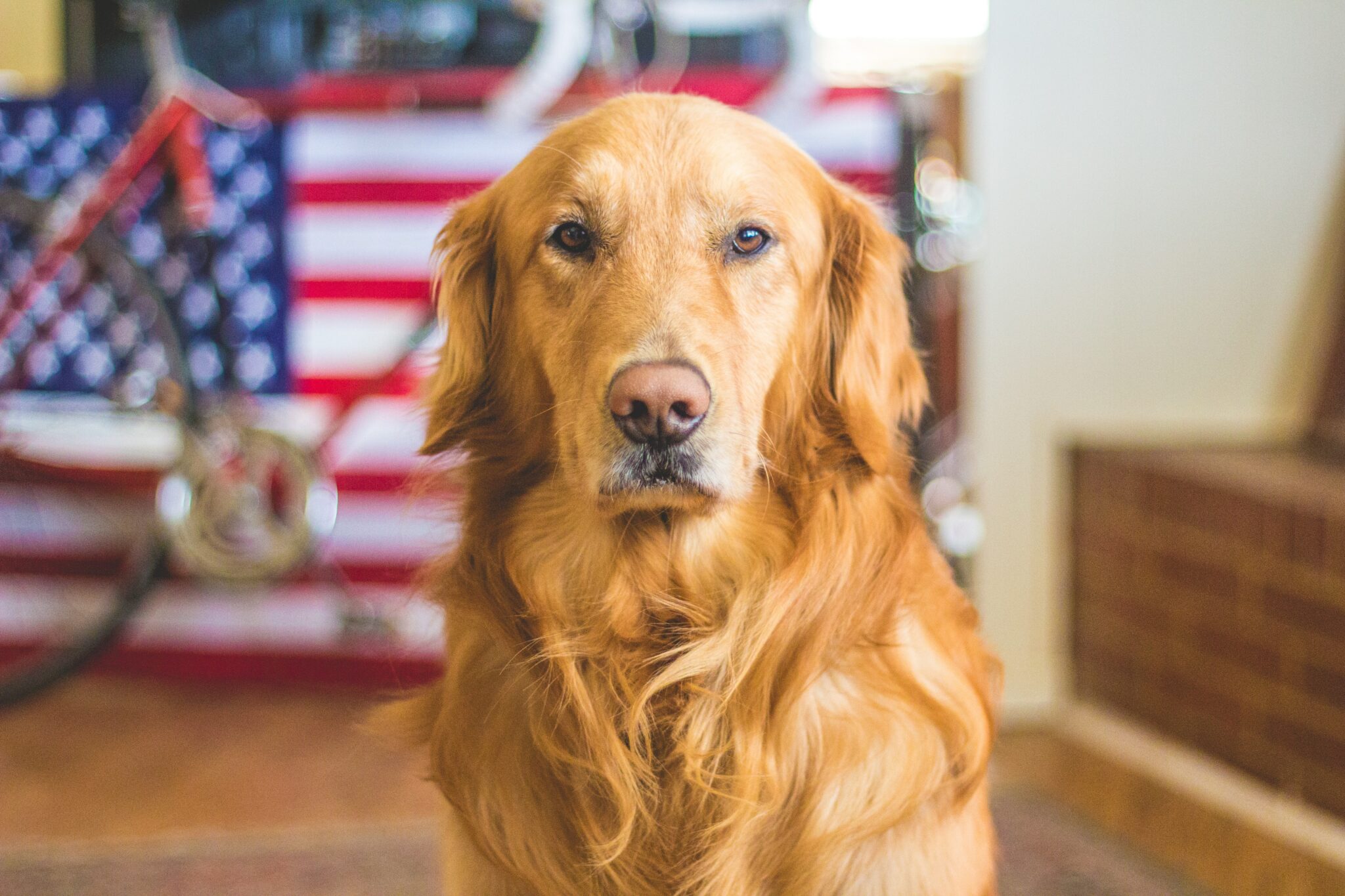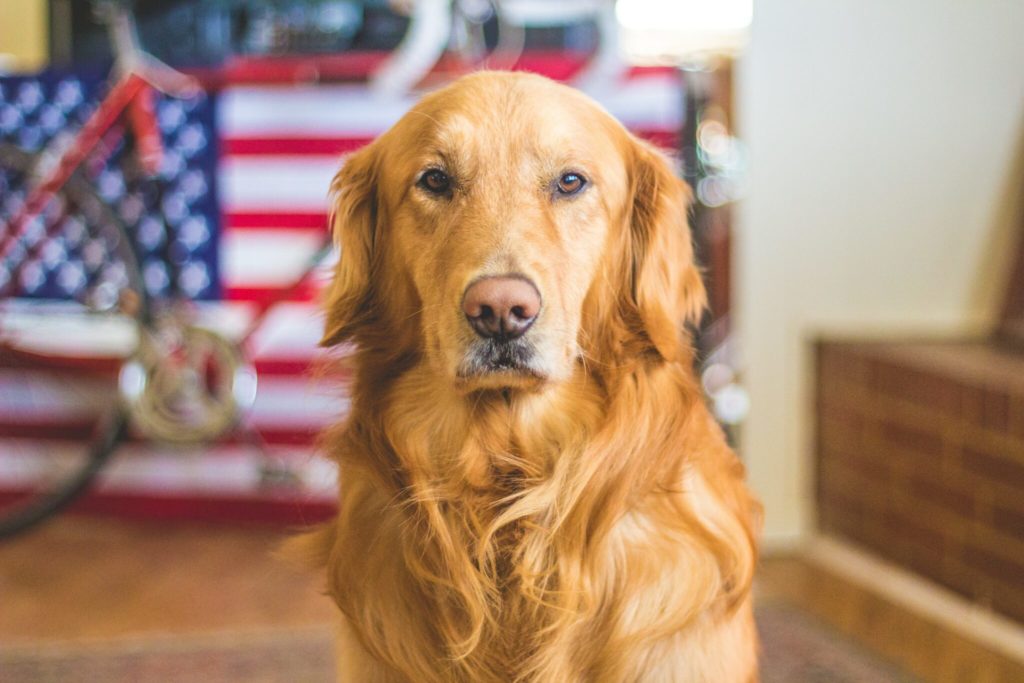The Lhasa-Poo is a small, fluffy companion dog that has quickly become one of the most popular hybrid breeds in recent years. As its name suggests, this pup is a mix between the Lhasa Apso and the Poodle, making it a great choice for those looking for an intelligent and loyal family pet. With their playful personalities and sweet dispositions, Lhasa-Poos are sure to bring love and joy into any home.
At PuppyHeaven we understand how important it is to make sure you have all the information you need when selecting your perfect pup. That’s why we’ve put together this comprehensive guide about the Lhasa-Poo breed. Here, you can learn all about the breed’s history and temperament so that you can make an informed decision about whether or not this pup is right for your family.
If you’re considering getting a Lhasa-Poo then you’re in luck! Not only are these pups incredibly smart and low maintenance but they also have an innate desire to serve their owners – making them an ideal fit for families who want a devoted canine companion who will always be by their side. So read on to find out everything there is to know about this delightful breed!
History Of The Lhasa-Poo Breed
The Lhasa-Poo is a unique hybrid dog that has recently become popular in the United States. This pup is a mix between two much-loved breeds, the Poodle and the Lhasa Apso. Let’s take a look at the history of this fascinating canine!
The Poodle and Lhasa Apso have been around for centuries, with both originating in Asia. The Poodle is believed to have originated from Germany but was popularized in France. Meanwhile, the Lhasa Apso originated in Tibet and was brought to England during the 1900s. In recent times, these two breeds have been crossbred to create an adorable offspring – the Lhasa-Poo!
This breed is known for being intelligent, loyal and loving. They make great family pets as they are very affectionate and easy to train. They also get along well with other animals so it’s best to socialize them early on in life if you plan on having more than one pet living together. All in all, the Lhasa-Poo is sure to bring joy into any home they enter!
As per their size and appearance, this breed typically weighs between 10-25 pounds when fully grown and stands 12-15 inches tall at the shoulder. Their coat can be either wavy or curly depending on their parents’ genes, and they typically come in shades of white, black or grey with some markings of brown and tan present too. All these qualities combine to make a beautiful pup that will surely be an attention grabber wherever they go!
Typical Size And Appearance
The Lhasa-Poo is an adorable hybrid breed that combines the intelligence of a Poodle with the affectionate nature of a Lhasa Apso. They are a popular choice for those looking for an active and loyal pup that’s small enough to fit into most households. Let’s take a closer look at the typical size and appearance of this delightful breed.
Lhasa-Poos generally weigh between 10-20 pounds when fully grown, making them an ideal fit for apartments and small homes. Their coat can vary from curly to wavy, depending on their parent breeds. Generally, it is low maintenance and easy to groom. Here are four traits that make up this breed’s physical characteristics:
• A soft, muzzle-like face • Small ears that lay close to their head • Medium length legs • A fluffy tail that curves upwards towards its back
These pups come in several colors including white, black, gray, cream and tan. They have big eyes and round faces which makes them even more attractive! Although they usually appear solid in color, sometimes they may also have markings or patches on their coats too.
No matter their size or color, Lhasa-Poos are known for being incredibly loving companion animals who will do anything to please their owners and families. With proper care and nutrition, these dogs can live anywhere from 12-15 years! If you’re looking for a pup who will be your faithful friend for many years to come, then this may be the perfect breed for you!
Health And Longevity
The Lhasa Poo is a hybrid breed with an average lifespan of 12-15 years. When it comes to their health, they are generally quite healthy dogs, but there are a few health issues to look out for. Here’s a list of the most common health concerns that come with owning a Lhasa Poo:
- Patellar Luxation: This condition occurs when the knee joint slips out of its natural position causing pain and lameness in the leg.
- Brachycephalic Syndrome: This is caused by the breed’s short snout and can lead to breathing issues, difficulty eating and drinking, and eye problems.
- Progressive Retinal Atrophy (PRA): This is an inherited eye disease that causes vision loss over time and can eventually lead to blindness.
- Hypothyroidism: This condition is caused by an underactive thyroid gland which can cause dry skin, hair loss, weight gain, and other problems.
The good news is that these conditions can be managed with proper diet, exercise, and veterinary care so you should make sure your pup gets regular check-ups to help keep them happy and healthy! With proper care and attention, your Lhasa Poo will live a long and joyful life filled with love and affection.
Now let’s move on to discussing the temperament and trainability of the Lhasa Poo – two characteristics that are essential for any happy pet parent/puppy relationship!
Temperament And Trainability
The fourth step in learning about the Lhasa-Poo is their temperament and trainability. This breed is known for being gentle, loving and playful, making them great companions for those looking for a loyal friend. They are also highly intelligent and can be easy to train with the right approach.
Lhasa-Poos love spending time with their owners and like to be included in family activities. This breed usually gets along well with children as well as other animals, although they may take some time getting used to new people before fully warming up. With patience and consistency, though, you’ll soon have a beloved companion who will bring joy into your life!
Training sessions should be kept short and sweet – this breed can get bored easily if asked to do too much at once. Positive reinforcement techniques are always best when it comes to training your pup. Rewards such as treats or praise can go a long way in helping them understand what you want from them. And don’t forget that playtime is an important part of training too – bonding through fun activities will help create a strong relationship between pet and owner that’s sure to last a lifetime! Now let’s look at grooming requirements for this unique breed…
Grooming Requirements
Grooming a lhasa-poo is like a walk in the park. These pups are easy to maintain, with quick and easy brushing being all that’s needed for their coats. Brushing should be done at least once per week to keep their fur looking its best.
Bathing should only be done when necessary. As long as regular brushing is done, baths are not needed very often. If your pup gets into something messy, however, it’s important to give them a bath right away to avoid any skin irritations or other issues. You may also want to consider using a dry shampoo between baths to help keep your pup’s fur clean and fresh-smelling.
To complete the grooming process, trimming nails regularly will keep them from becoming too long or sharp. It’s best to get your pup used to nail trims early on so they don’t become scared of them later on in life. Keeping your pup’s ears clean and free of debris is also important for good hygiene and health.
Next up, it’s time to discuss common health issues for lhasa-poos and how you can prevent them from occurring in the first place.
Common Health Issues
When it comes to the health of our beloved pups, knowledge is power. It’s essential to have an understanding of common ailments that may befall the lhasa-poo, lest you be caught unawares. Like a well-oiled machine, a little bit of preventive maintenance can go a long way.
Common ailments for this breed include respiratory infections, eye problems and skin allergies. Many times these conditions can be prevented with proper care and nutrition. Brachycephalic syndrome, which results from the pup’s shortened head shape, can cause breathing difficulties if not addressed early on. Respiratory infections can arise from environmental exposure or poor hygiene and should be monitored closely by your veterinarian.
In addition to external maladies, lhasa-poos can also suffer from eye problems such as glaucoma or cataracts. Skin allergies are another common issue with this breed and can present in various forms such as inflammation or rashes due to contact dermatitis. Allergies are usually caused by environmental irritants like pollen or fleas so it’s important to keep your pup away from potential allergens.
It’s important to stay vigilant when it comes to your pup’s health and wellbeing – just like any family member! With regular vet visits and proper nutrition, you can help ensure that your lhasa-poo lives a long and healthy life! Through diet and nutrition specifically tailored for their unique needs, we can make sure they stay happy and healthy into their golden years!
Diet And Nutrition
It’s funny that we even have to talk about diet and nutrition for this pampered pooch. After all, the lhasa-poo has been known to live in the lap of luxury! But don’t let their royal status fool you, they still need special care when it comes to food.
Fortunately, these little guys are easy to please when it comes to mealtime. They do well with high quality dry kibble or canned wet food, tailored to their size. A few treats now and then won’t hurt either, as long as they are healthy and nutritious.
Not only that, but you can give your lhasa-poo a balanced diet by adding fresh fruits and veggies like carrots or apples into their meals. This will help provide the essential vitamins and minerals needed for a healthy life. With a proper diet and nutrition plan, your pup is sure to thrive! And coming up next we’ll talk about how much exercise this breed needs…
Exercise Needs
It’s an incredible coincidence that as we move into the exercise needs of a lhasa-poo, we find ourselves in the same boat as its human owners. That’s right, just like us humans, lhasa-poos need regular exercise to stay healthy and happy.
Fortunately for the lhasa-poo and its human companion, this breed is not overly active and does not require an excessive amount of exercise. In fact, a few short walks each day are sufficient for their needs. A good rule of thumb is to give your lhasa-poo at least 30 minutes of walking per day – but more is always better!
A lhasa-poo’s exercise routine should also include some mental stimulation – puzzles or games are a great way to keep them entertained while they work out their minds. Training sessions may also help with mental stimulation, as well as keeping them focused and disciplined. With the right amount of physical and mental activity, your lhasa-poo will be sure to stay happy and healthy!
Pros And Cons Of Owning A Lhasa-Poo
The average lifespan of a lhasa-poo is 15 years, making it a great choice for those looking for a long-term canine companion. But as with any breed, there are pros and cons that come along with owning one. At PuppyHeaven we believe owners should always be aware of these before taking the plunge.
One pro of owning a lhasa-poo is their intelligence. They are incredibly smart, which makes them easy to train and even have the potential to learn some tricks! They also have an amazing personality and love to be around people, making them the perfect family pet.
On the other hand, their long fur can require quite a bit of maintenance from brushing and shaving to regular bathing. Additionally, they tend to bark at loud noises or strangers which may make them less desirable if you live in an apartment or condo building with close neighbors.
Overall, owning a lhasa-poo is an incredibly rewarding experience but prospective owners should take into account all the necessary maintenance that comes with having such an intelligent pet before taking on this responsibility. As you’ll see in our next section about ‘costs’, budgeting for these needs is an important factor when deciding if this breed is right for your lifestyle.
Cost Of Owning A Lhasa-Poo
Owning a lhasa-poo can be a wonderful experience. The adorable and smart little pup brings joy and love to its family members with their playful personalities. With a lhasa-poo, you get the best of both worlds: the intelligence of the poodle and the gentle, easy-going nature of the Lhasa Apso. Let’s take a look at what it costs to own one of these delightful pups.
The cost of owning a lhasa-poo varies greatly depending on where you purchase your pup and what type of health screenings they receive. Generally speaking, you should expect to pay anywhere from $800 to $2,000 for a lhasa-poo puppy depending on its parents’ bloodlines and quality. Here are some additional expenses that come with owning this breed:
• Vet visits: Regular vet checkups are essential for any pet, including a lhasa-poo! You should budget for an annual exam as well as any necessary vaccines or treatments throughout its life. • Food: A good diet is key to keeping your pup healthy and happy – budget for high quality dog food that meets all its nutritional needs. • Supplies: From crates and beds to toys and grooming supplies, there are many items that make up their environment – make sure you have everything your pup needs before bringing them home! • Grooming: Lhasa poos need regular grooming sessions to keep their coats looking beautiful – set aside funds for professional grooming appointments or learn how to do it yourself!
All in all, when you add up all these costs over the course of your pup’s lifetime, it can end up being quite costly – but every penny will be worth it when you see how much joy they bring into your life! When searching for a reputable breeder, it’s important to do your research so that you can get the best possible pup for your money.
Finding A Reputable Breeder
Finding a reputable breeder for your lhasa-poo can be difficult. According to the American Kennel Club, over 3 million dogs are euthanized in the United States each year due to pet overpopulation. This makes finding a responsible breeder all the more important.
When searching for a puppy, there are certain steps you should take to ensure you’re getting the best quality pup. Start by asking around your local communities and checking online forums for recommendations on breeders. You should also make sure that the breeder is properly licensed to sell puppies and has a good reputation among their customers.
When you meet with the breeder, make sure to ask questions about their breeding practices, such as how often they vaccinate their pups and if they perform genetic health testing on their parents. Additionally, ask to see the pup’s parents and observe how they interact with each other and with people. If everything looks good, then you can begin discussing price and making arrangements to bring home your new lhasa-poo!
With all of this information in mind, you’ll be well prepared when it’s time to find your perfect pup. When searching for a lhasa-poo, make sure you do your research beforehand so that you can rest assured knowing that you’re getting an ethically sourced pup that’s healthy and happy!
Finding A Rescue Lhasa-Poo
If you’re interested in bringing a lhasa-poo home, but don’t want to buy from a breeder, there are many ways to find a rescue pup. Rescuing an animal is a wonderful way to provide them with the love and care they need while also filling your home with joy. Here are some tips on finding a rescue lhasa-poo:
First, check out local animal shelters or rescues in your area. Many of these organizations specialize in specific breeds, so it’s worth reaching out and asking if they have any lhasa-poos looking for homes. Some may even be able to match you with the perfect pooch!
Second, search online for adoption resources and donation networks. There are lots of websites dedicated to helping homeless pets find forever homes. You can also look on social media platforms like Facebook and Instagram to connect with people who may have lhasa-poos needing a good home.
Third, consider reaching out to breeders or breed clubs for advice about rescue pups available nearby. These organizations often have their finger on the pulse when it comes to adoptable animals within their network. Plus, they can give you helpful tips on what kind of pup will best suit your lifestyle and needs.
Rescuing an animal is one of the most rewarding experiences you can have as an animal lover – so why not try it out? With the right information and resources at hand, you’ll soon be on your way towards choosing the perfect lhasa-poo for your home!
Choosing The Right Lhasa-Poo For Your Home
It’s time to take the next step in your journey to finding the perfect pup for your home. Now that you’ve narrowed down your search to a lhasa-poo, you’re ready to choose one that is the ideal companion for you and your family. Let’s take a look at how you can get started on selecting the perfect pooch.
First things first, make sure you are aware of all the traits associated with this breed. Lhasa-poos are known for their sweet nature, intelligence and loyalty – making them an excellent choice as a family pet. But they also need plenty of attention and activity, so are best suited to those who have time to spend with their pup on a regular basis.
To find just the right pup, it’s best to start by researching reputable lhasa-poo breeders in your area. Ask around or check out online reviews to get an idea of who has good breeding practices and high standards when it comes to raising puppies. Visiting different breeders can also help you determine which pup is right for you – pay close attention when interacting with each one and observe how they interact with other animals as well as people.
Once you’ve decided on which puppy is best suited for your home, it’s time to ensure that they receive proper socialization and obedience training from an early age – paving the way for a long and happy life together!
Socialization And Obedience Training
Socializing and obedience training are essential for all dog breeds, but especially for smaller breeds like the lhasa-poo. It’s important to start training your pup when they’re young and develop a consistent routine so your little one quickly learns the rules and boundaries of your household.
To socialize your lhasa-poo, take them out in public places such as parks, pet stores or even just around your block. This will help them get used to other people, animals, sounds and smells. You should also invite guests over to introduce them to different types of people they may encounter later on in life. This will help them build trust with strangers and reduce their fear of the unknown.
When it comes to obedience training, you’ll want to start with basic commands like sit, stay and come when called. Use positive reinforcement techniques such as treats or verbal praise when they obey the command correctly. Try not to scold or punish them if they don’t follow directions as this can make them more fearful or anxious.
TIP: Spend some extra time playing with your pup each day; this gives you an opportunity to bond with your pet while reinforcing good behavior through positive reinforcement techniques! As you give your puppy love and affection, you’ll both benefit from a deeper connection between human and canine that will last a lifetime.
Tips For Taking Care Of Your Lhasa-Poo
Owners of Lhasa-poos are often amazed at the level of care and attention needed for these small but mighty dogs. From their fluffy fur to their bright eyes, they have a lot of personality that can make them a great addition to any family—but only when cared for properly. So if you’re looking to bring home your own Lhasa-poo, here are some tips for taking care of them!
First and foremost, grooming is important for all breeds of dog—but especially for the longhaired Lhasa-poo. Daily brushing is essential to prevent tangles and keep their coats in good condition. You may also want to take your pup to a professional groomer every few months so they can get a trim, bath, and nail clipping.
Exercise is also an important part of taking care of a Lhasa-poo. They are energetic little dogs who need plenty of playtime and outdoor activities like leash walks or fetching games. Providing interactive toys like puzzle balls or chew bones can also help keep them entertained in between play sessions.
Finally, remember that all dogs need proper nutrition to stay healthy! Feeding your pup high quality food with minimal fillers can help ensure that they’re getting all the vitamins and minerals they need for optimal health. Keeping treats around can be tempting, but it’s better to give them lots of love instead! With the right care, you can provide your beloved pup with a happy home where they can thrive!
Conclusion
Congratulations! You’ve just taken the first steps towards adding a Lhasa-Poo to your family. These adorable little pups know how to bring joy and happiness wherever they go, with their friendly and lovable personalities.
The key to having a successful relationship with your Lhasa-Poo is to remember that love is like a river, it needs to be constantly refreshed with care and attention. Be sure to provide daily exercise, regular grooming, socialization, and obedience training for your pup in order to keep them healthy and happy. With the right balance of care and commitment, you’ll have a loyal companion who will bring you years of laughter and enjoyment.
So don’t let this opportunity slip away – jump in with both feet and embrace the challenge of owning a Lhasa-Poo! After all, life is too short not to take a chance on happiness – and these furry friends are ready to become part of yours!







